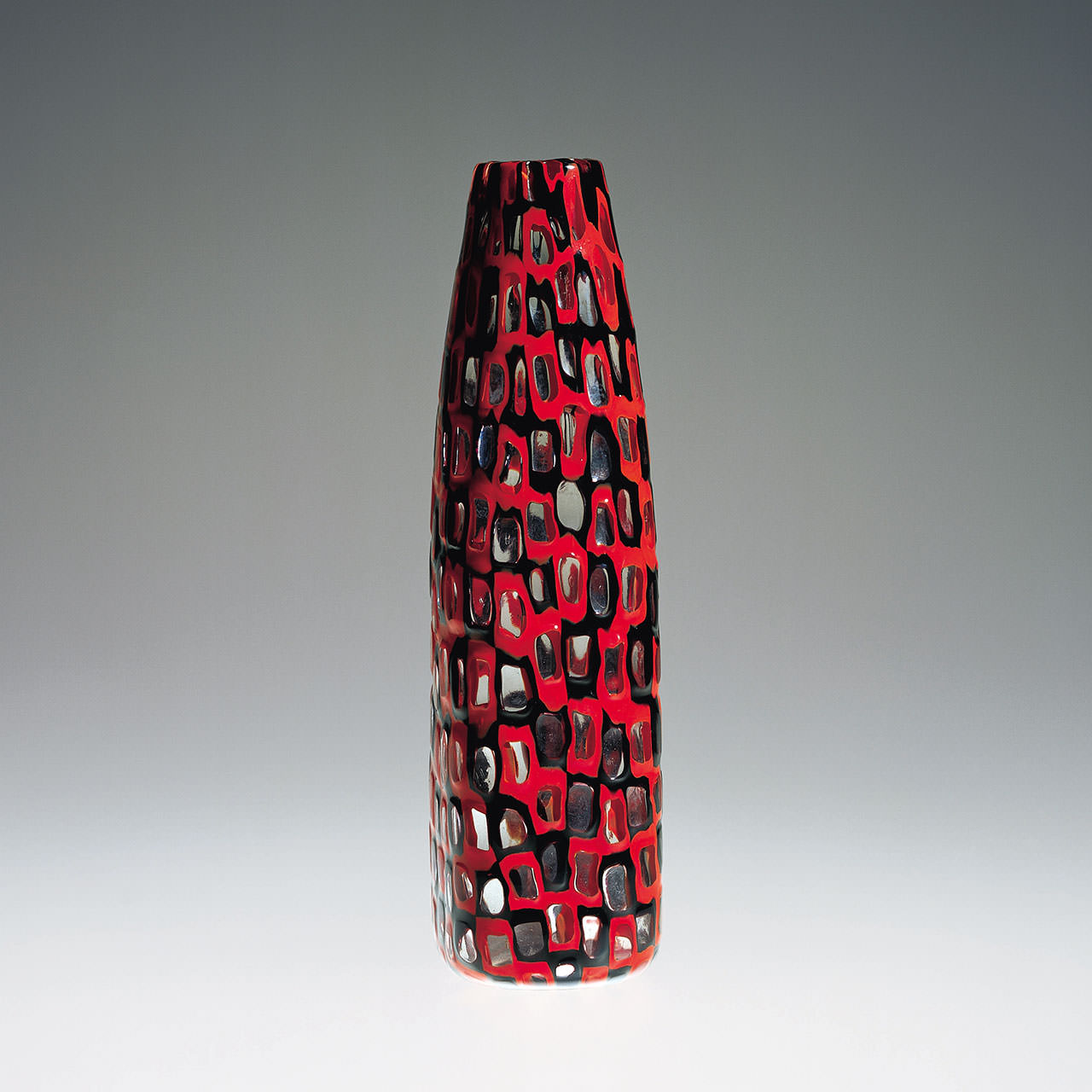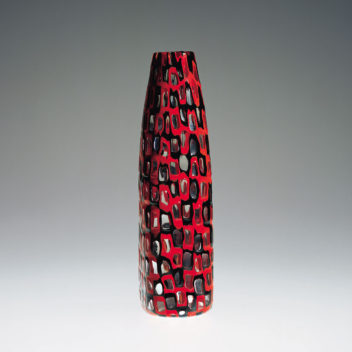
Tobia Scarpa 1935–
Tobia Scarpa, son of Carlo Scarpa, was born in Venice, where he graduated from the Istituto Universitario di Architettura di Venezia. In 1958, he was invited by Paolo Venini to collaborate in the furnace, following in the footsteps of his father, who had worked with Venini during the ’30s and ’40s. Tobia Scarpa designed new collections for Venini even after the death of its founder, creating refined blown glass pieces exemplified by the essential quality of their design. The most successful vessels were his large Battuti vessels, the Occhi and Murrine series, for which he reinterpreted ancient Roman glass techniques. As an architect and designer, together with his wife, Afra, he has collaborated with many companies—Cassina, B & B Italia, Flos, Molteni & C., to name a few—in creating works that belong to the best tradition of Italian design. During the ’80s, he and his wife designed several glass collections for VeArt.


